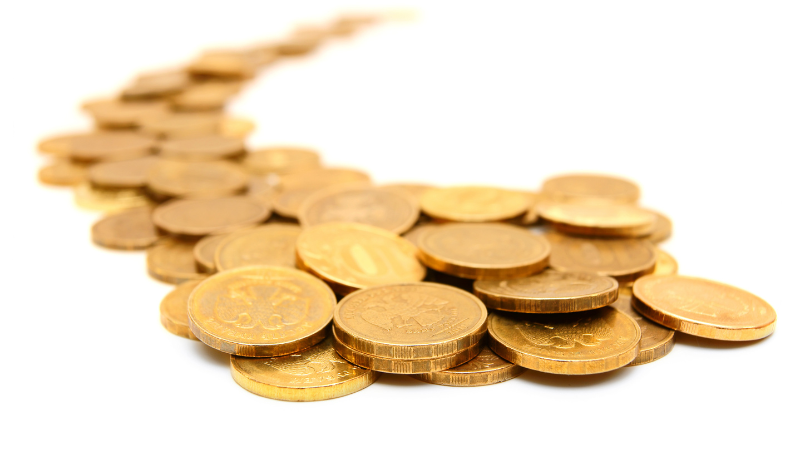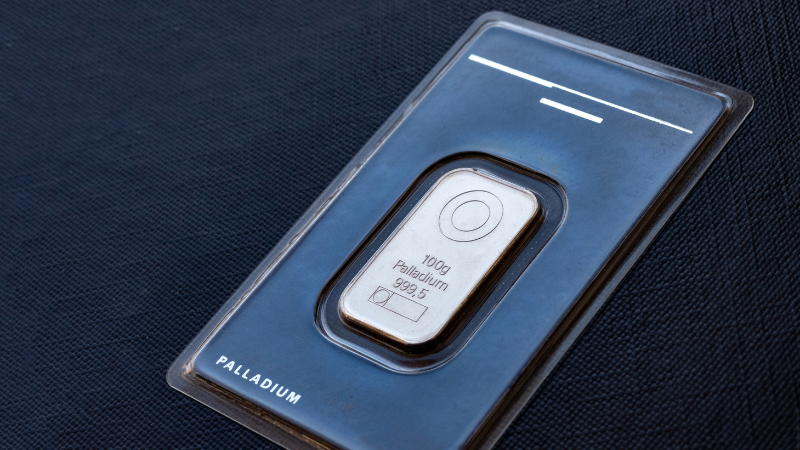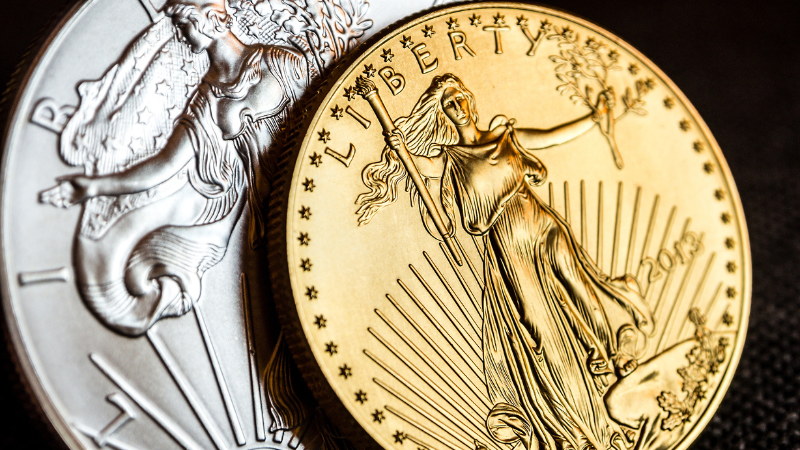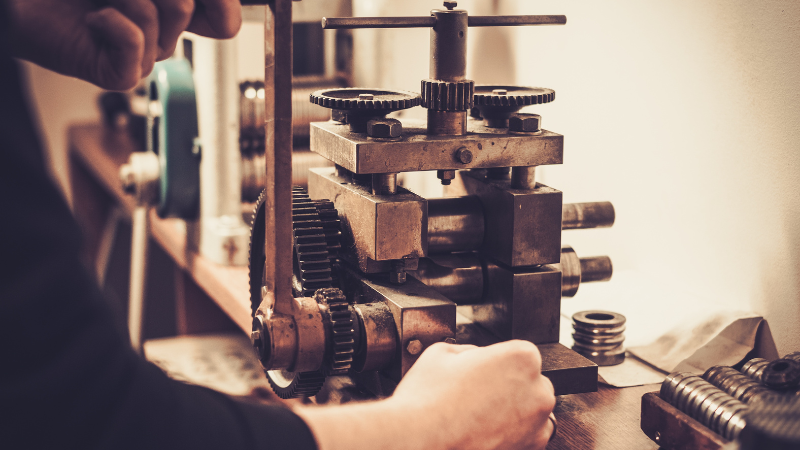
One of the initial considerations when setting the price for precious metals is to ascertain the level of purity and fineness of the metal. Precious metals are frequently mixed with other metals in jewelry and other applications to reduce costs or achieve a specific appearance. The higher the purity level of the metal, the greater its value. Explore this blog to learn about various precious metals, purity and fineness, and their economic worth.
Precious metals are highly valued elemental metals that have significant economic worth. Some of these metals have been used as currency due to their rarity and desirability. The most commonly recognized precious metals are those resistant to corrosion and utilized in producing jewelry, currency, and investments. These metals include:

Gold has a distinct golden hue that makes it simple to identify. The popularity of gold stems from its color, ability to be shaped, and conductive properties.

Although silver is often used for ornaments because of its beauty, it also has practical uses. It has the least resistance to touch of any element and the maximum thermal and electrical conductivity.

Platinum is a dense and pliable metal that possesses excellent corrosion resistance. Despite being almost 15 times rarer than gold, it is widely used. This makes platinum the most precious of all the precious metals due to its scarcity and functionality.

Palladium shares similar properties with platinum. It is also a rare and pliable metal that can absorb significant hydrogen. It is capable of maintaining stability at high temperatures.

Despite being one of the most dependable and valuable minerals, copper is a unique precious metal that investors generally ignore. Due to its industrial and commercial value, copper bullion has a specific value on the international market. Investing in copper, whether it's through copper rounds or bars, is a low-risk option that offers investors outstanding returns.

Determining the price of precious metals involves an initial assessment of their purity and fineness. Precious metals are frequently combined with other metals in jewelry and other applications to maintain affordability or achieve a specific aesthetic. The value of the metal increases with its purity. These alloy metals are added to enhance the object's durability and hardness, modify its color, reduce the cost per weight, or avoid the high cost of refining high-purity metals.
These terms 'purity and fineness' refer to the grade and composition of precious metals such as gold, silver, platinum, and palladium. While they share an analogous definition, they are not identical.
Purity means the ratio of the principal precious metal to other metals present in an alloy. It establishes the worth and quality of metals used in coins, bullion, and other applications.
In contrast, fineness is a measurement of purity stated in parts per thousand. It denotes the quantity of gold per 1,000 parts of one piece. For instance, a 995 fineness bar contains 995 parts gold and 5 parts other metals or impurities. 999.9 fineness, also known as four nines or 24 karat (k) gold, is the purest form of gold accessible for purchase.
In Europe, gold jewelry is inscribed with three numerals (fineness) that refer to the percentage of gold (silver, platinum, or palladium). In the United States, gold purity is typically expressed in karat weight.

When investing in gold or silver, one of the key factors to consider is the purity of the metal you purchase. Gold and silver are usually blended with other metals to increase their durability due to their relatively soft nature. These metals are called "additives, " including copper, zinc, nickel, and palladium. Comprehending the numbers used to quantify purity is critical since even a slight difference can significantly impact the product's overall value.
The amount of base metal defines the importance of measuring gold purity because it establishes a benchmark for purchasing and selling gold products. For instance, the United States legally required a minimum of 10 karats for something considered gold. Although other nations may have different standards, assessing gold purity provides consumers with information about the composition of their metals.
A straightforward way to determine the amount of gold is to use the karat range of 0 to 24. This value truly shows how much gold there is about other metals. A 10-karat gold ring, for instance, has 42% gold, while the other metals are different alloys.
Purity or fineness of gold: gold to metal additive ratio
Bullion is a precious metal expressed in mass rather than value, such as gold bars and coins. Bars, ingots, and coins are types of bullion.
The test: test that establishes the quality and quantity of metal.
Karats are a unit of measure for the purity of gold; the finer the gold, the higher the number, with 24 karats being the highest, the karat.
A precious metal's hallmark is a symbol that is stamped on it to attest to its purity.
A technique known as millesimal fineness uses parts per thousand to measure the purity of precious metals rather than karats.
Troy ounce: 1 oz is equal to 31.1034 grams.
The purity of silver is often measured using millesimal fineness, with .999 being the most pure form. To identify real silver, use a magnifying glass to check for stamps on its surface. If you come across a 925 stamp, the silver piece is 92.5% pure, 900 signifies 90% purity, and 800 indicates 80% purity.
If you hold a magnet against the silver and it sticks, it's not real silver.
To check the authenticity of silver, place an ice cube on it and see if it melts right away. Then, it’s not real silver.
You can also apply a drop of bleach to the silver and observe if it tarnishes or blackens immediately, which means it's real silver.
Precious metal purity standards measure the worth and quality of metals, including gold, silver, platinum, and palladium. Purity shows how much of the metal is pure and how much is contaminated by impurities or other metals. There are numerous ways to determine the purity standard, including karats, millimeter fineness, and hallmarks.
One karat is 1/24 of a part of pure gold in an alloy, and karats are a unit of measurement for the purity of gold.
A technique known as millesimal fineness uses parts per thousand of pure metal in the alloy to indicate the purity of platinum, gold, and silver alloys. For instance, a 75% gold alloy has a fineness of 750 parts per thousand.
Hallmarks are recognized logos that guarantee the fineness and purity of precious metals. Additionally, they list who made the metal item, the year it was made, and the country of origin. Hallmarks are often stamped or engraved on the metal by accredited organizations or bodies. Different hallmarking techniques and symbols are used in various nations and areas.
The power that gold symbolized in ancient times was due to its corrosion resistance. The ruling classes used it as a status symbol because it was rare, shiny, and attractive. It was first discovered in Egypt, but its real history began in 3600 BC when Egyptians began smelting it for use in jewelry.
In 564 B.C., Croesus, King of Lydia, an Iron Age kingdom located in modern-day Turkey, was the first to issue genuine gold coins consistent with a purity that would eventually lead to modern-day bullion. These coins were made of electrum, a naturally occurring gold-silver alloy. Romans took this idea and established the first widespread monetary system using gold approximately 500 years later.
Silver, one of the first five metals discovered and used, plays a significant role in human history. However, when silver was discovered in large quantities across South America in 1492 A.D., its value and importance significantly increased.
Platinum was not an officially recognized element in 1751 A.D. It took until 1988 for the first platinum bullion coins to be issued. Nevertheless, platinum bullion has since become highly popular among people.
Today, precious metals are used in jewelry, investments, electronics, and automobiles. The US produced 170 metric tons of gold and 1100 metric tons of silver in 2022, whereas Mexico and China produced 5400 metric tons and 4550 metric tons, respectively, far exceeding this number.
A precious metal gets more valued with higher purity. As a result, adding precious metals to your investment portfolio is a good decision. The simplest way to achieve this is to expand your collection of tangible bullion goods.
Many different words and methods are used to determine the purity of precious metals. The terms "karats," "millesimal fineness," and "unique symbols" pop out in particular. These checks can all determine the metal's composition, origin, and price.
Selecting a reputable bullion dealer, like BOLD Precious Metals, is essential to guarantee the legitimacy of your investment. BOLD has earned a reputation for credibility with satisfactory customer feedback and by providing a large selection of bullion goods at comparatively lower pricing.
For a reliable and long-lasting investment opportunity, choose investing with BOLD.